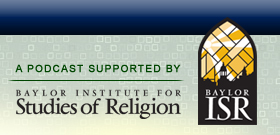

|
Mark Glickman on the Cairo Genizah  Date: November 21st, 2011
 What do you get when you combine Indiana Jones with The Da Vinci Code in an old Egyptian synagogue? Rabbi Mark Glickman, lead rabbi at Kol Ami (Woodinville, WA) and Kol Shalom (Bainbridge Island, WA), reveals the answer to this that he wrote about in his book Sacred Treasure, The Cairo Genizah. We begin with a discussion of just what a genizah is and why Jews consider writing to be so sacred that it must either be buried in a cemetery or collected in a special “attic” or antechamber known as a genizah. Rabbi Glickman then discusses a very special genizah that is located in the Ben Ezra Synagogue in Cairo, Egypt. He recounts his own visit there in 2010 to describe what he saw, and then takes us back on a historical journey to the late 19th century when Rabbi Solomon Schechter stumbles upon fragments of an ancient and valuable manuscript known as the Ben Sirah document. This discovery came to Schechter’s attention via his association with two adventuring sisters. We review the life of Solomon Schechter and then detail his journey to Cairo to “re-discover” the voluminous contents of the Cairo Genizah and bring them back to Cambridge University, where they have been the center of investigation for over a century at the Taylor-Schechter Genizah Research Unit. Our discussion then moves on to some of the mundane (e.g., wedding certificates) and incredible discoveries that were contained within the nearly 200,000 documents shipped to England. The latter finds include the Damascus manuscript, heretofore unknown writings of Maimonides, and some Jewish hymns. Along this journey we also reflect upon the vibrancy of Judeo-Arabic culture, the significance of historical documents, and why religious pluralism can often be a good thing. Recorded: November 4, 2011. RELATED LINKS Sacred Treasure, The Cairo Genizah: The Amazing Discoveries of Forgotten Jewish History in an Egyptian Attic, by Rabbi Mark Glickman (Jewish Lights Publishing). Also available in audio format. Rabbi Mark Glickman’s columns at The Seattle Times. Taylor-Schechter Genizah Research Unit at Cambridge University. RELATED PODCASTS Carmel Chiswick on the Economics of American Judaism.
4 Responses to “Mark Glickman on the Cairo Genizah”Leave a Reply |
 Search The Podcast
To search the podcast, type a term and click the Search button.
  Browse Podcast Categories
Select a category below to browse the podcast:
   |















I really enjoyed this podcast; thank you. The question which occurred to me was this: in the digital age, how do Orthodox Jews deal with sacred texts online or in emails or electronic formats in general;are they distinguished in any way (in their storage or deletion) from non-sacred elctronic texts?
Rosa,
I replied with the rabbi’s comments below. We might have a glitch in our “reply” function on our website.
(Rosa, Rabbi Glickman wanted to respond but had problems getting his answer to post. As such, I am cutting and pasting the response he sent to me in email. Thanks for listening. Tony Gill, the host.)
Thank you, Rosa, for your kind feedback and for your very good question regarding how Orthodox Jews deal with the disposal of sacred texts. As a Reform rabbi, I am not involved with Orthodox practice on a daily basis. The answer to your question is twofold:
1. Orthodox Jews try to avoid using any of the traditional names of God in online contexts, and use placeholder-names, instead – Hashem “the name”, “Kelohim” (an ancient moniker for the divine begining with a K instead of an E) and “G-d” are but a few examples. Using these replacement names prevents the documents in which they appear from being considered sacred, so they can be disposed of just as easily as medication ads and hurried pleas from members of the Nigerian Royal family.
2. That said, the important prohibition here is STILL that of disposing of a physical object bearing the name of God. So, when God’s name does slip into a digitized text, I think that even most of our Orthodox brothers and sisters will delete it without many qualms at all. If that document for some reason get printed, however, the hard-copy would need a to go into a Genizah when it is no longer usable.
Thanks again for your query.
Rabbi Mark Glickman
[…] Mark Glickman on the Cairo Genizah. […]